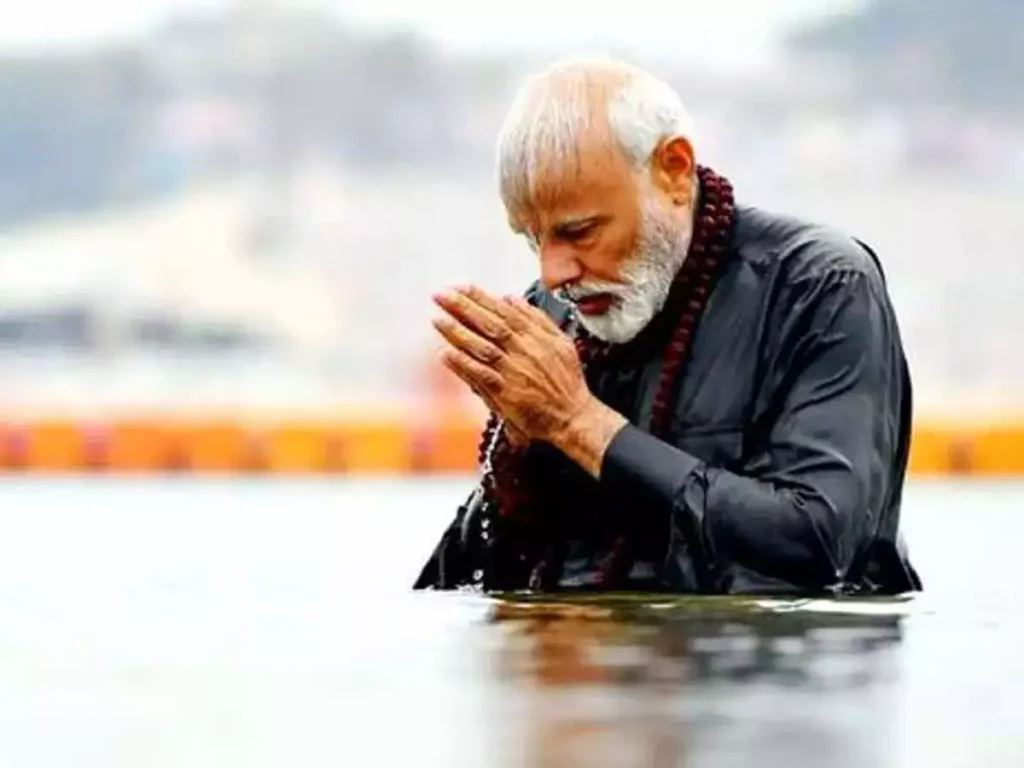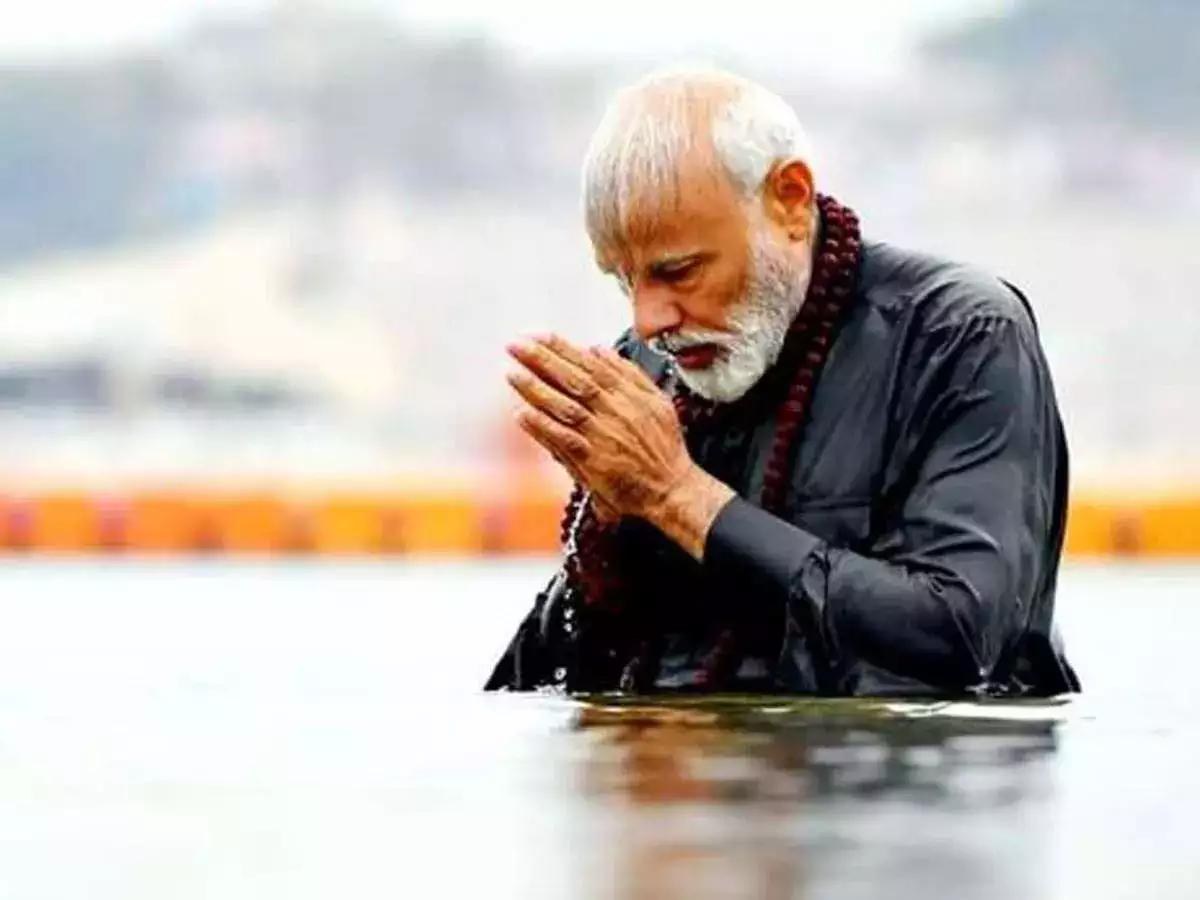Dr. Priyanka Gupta*
Introduction
The NaMo government’s Namami Gange program is a ray of hope in sustainable development and environmental conservation. Launched in 2014, this massive project aims to purify and revitalize the holy Ganges River, which provides millions of Indians with their daily sustenance. But in addition to its main objective of cleaning up the Ganges, the program has expanded its scope to include the important field of inland navigation. This article explores the mutually beneficial relationship between Namami Gange and improving India’s inland navigation.
The Genesis of Namami Gange
The idea behind Namami Gange, which translates to “Obeisance to the Ganges,” sprang from the knowledge that the once-pure river had suffered greatly from pollution and deterioration. The main goal of the program is to revive the Ganges and bring it back to its former splendor so that it can once again serve as a symbol of cleanliness and nourishment. Namami Gange arose as a comprehensive answer to the complex problems facing the holy river through an all-encompassing approach that covered several facets of river management, wastewater treatment, and public participation.
The Interplay between Namami Gange and Inland Navigation
Although the main goals of Namami Gange are water conservation and purification, the program also acknowledges the interdependence of water bodies and how they affect many facets of life, including transportation. Historically, the Ganges has been an essential canal for inland navigation, spanning multiple states in northern India. After realizing its historical significance, the NaMo administration carefully incorporated the enhancement of inland transportation into the larger Namami Gange scheme.

Source: Navbharat Times
Infrastructure Development
Building strong infrastructure along the Ganges and its tributaries is essential to improving inland shipping. The government has made large investments in the development and upgrading of ports, terminals, and jetties under Namami Gange. By enabling smoother and more effective river transit, these infrastructure upgrades hope to stimulate economic growth in the areas that the Ganges connects.
River Dredging
The depth of water bodies has a direct bearing on navigability, and river sedimentation is a major obstacle to inland transportation. To maintain the Ganges at the ideal depth for navigation, the Namami Gange plan involves significant river dredging. These dredging operations enhance the Ganges River’s navigability and support the ecosystem’s general health by clearing silt and debris.
Connectivity and Economic Growth
Namami Gange’s emphasis on improving inland navigation aims to connect isolated places and promote economic growth in addition to revitalizing old trade routes. The Ganges’ enhanced navigability makes it easier to carry commodities, which lessens the logistical difficulties faced by businesses that are situated alongside the river. This boosts regional economies and generates job opportunities by opening up new channels for trade and business.
Multi-Modal Transportation
Namami Gange incorporates inland waterways with other means of transportation because it recognizes the variety of types of transportation needed in a contemporary economy. The project promotes the construction of hubs for multimodal transportation that easily link rivers with highways and railroads. By encouraging a move toward more environmentally friendly forms of transportation, this integrated approach not only improves transportation efficiency but also lessens its impact on the environment.
Tourism and Cultural Exchange
In India, the Ganges River has great cultural and religious significance and draws millions of pilgrims and visitors annually. Namami Gange boosts tourism along the river and facilitates the movement of products by enhancing inland navigation. Particularly, cruise tourism has grown in popularity since it provides visitors with an unforgettable and immersive journey through the Ganges’ culturally diverse landscapes. This encourages cross-cultural dialogue and understanding in addition to strengthening the travel and tourism sector.
Challenges and Future Prospects
Notwithstanding the considerable progress Namami Gange has achieved in reviving the Ganges and encouraging interior navigation, difficulties still exist. Concerns about pollution, encroachments, and the careful balancing act between development and conservation continue. Furthermore, successful inland transportation depends on ongoing efforts to protect the quality of the water, stop new pollution, and adjust to the changing demands of a developing economy.
Looking ahead, cooperation amongst a variety of stakeholders—including governmental organizations, local communities, and businesses—is necessary for Namami Gange to continue to succeed in the field of inland navigation. Furthermore, the efficiency and sustainability of inland shipping along the Ganges can be further improved by utilizing innovation and current technologies.
Conclusion
The NaMo administration’s Namami Gange initiative is proof of its dedication to sustainable growth and environmental preservation. Recognizing the historical, economic, and cultural significance of the river, the effort has thoughtfully included the enhancement of inland navigation in addition to its core goal of cleaning up the Ganges. Namami Gange simultaneously opens up economic opportunities, promotes cultural exchange, and fortifies the connectedness of regions along the river. At the same time, it paves the way for a cleaner and more navigable Ganges. A prime example of the possibility for holistic approaches to environmental efforts, where ecological restoration is in line with economic growth and societal well-being, is the symbiotic interaction between Namami Gange and inland shipping. The NaMo government has paved the path for a sustainable and interconnected future for the people and industries that depend on the Ganges through Namami Gange, in addition to initiating a mission to revitalize a holy river.
Author’s Details
*Assistant Professor (Guest), Maitreyi College, University of Delhi


Leave a Reply